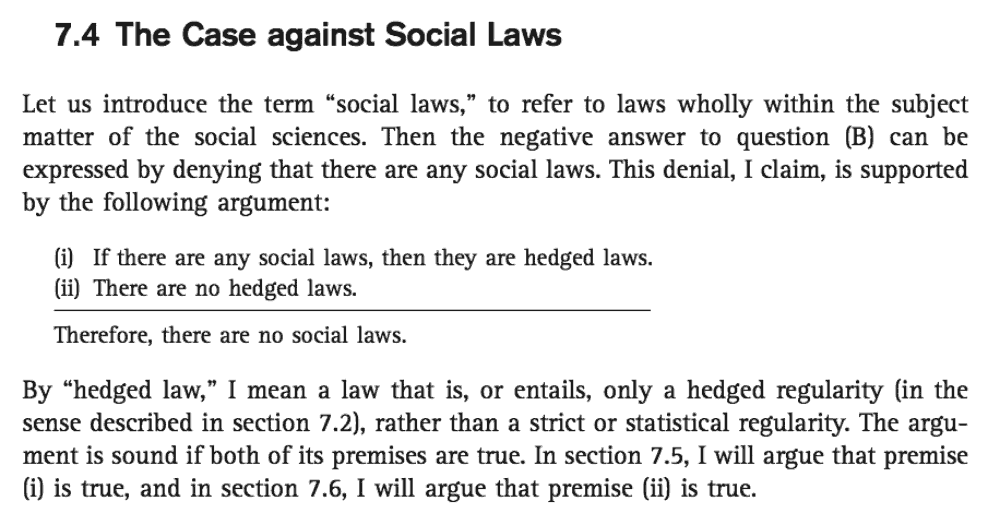The Scandal of the External World
Before taking a philosophy course, most of us develop a pretty common sense perspective on the existence of the external world. It might look roughly like this: there is an external world, together with my mental representation of it.
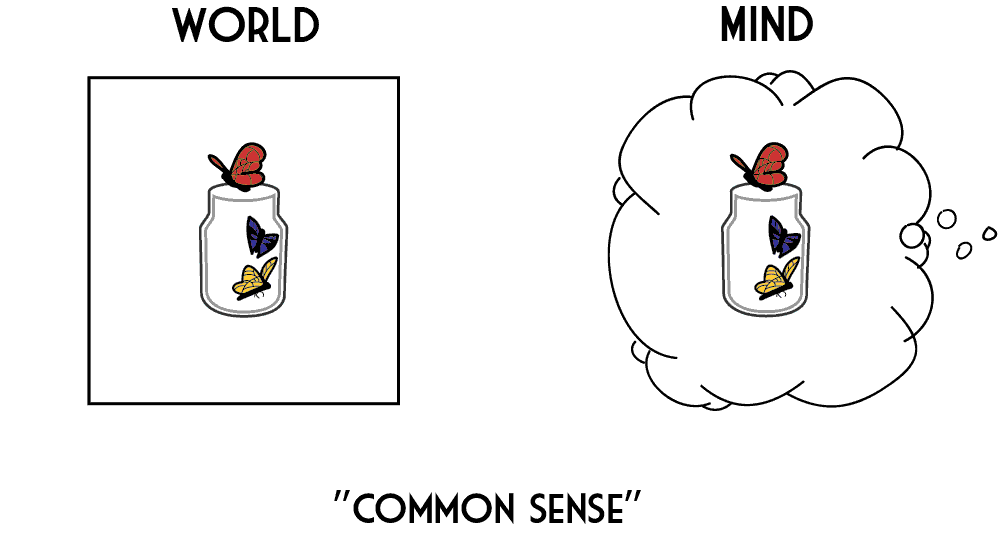
After reading some Descartes, one might doubt this common sense perspective. What would happen if you never overcame that doubt? Then you would be what philosophers call an "idealist". This philosophical usage of the word is much more extreme than the ordinary English (in the latter, idealism means something like "guided by impractical ideals"). For philosophers, idealism is an extreme form of doubt about the external world.
Today we're going to try to restore some of the common sense perspective, by discussing G.E. Moore's famous 'here is one hand' argument that there are things in the external world. Let's begin by getting clear on our target.
Ontological idealism
In contrast to the common sense view, ontological idealism looks something like this.
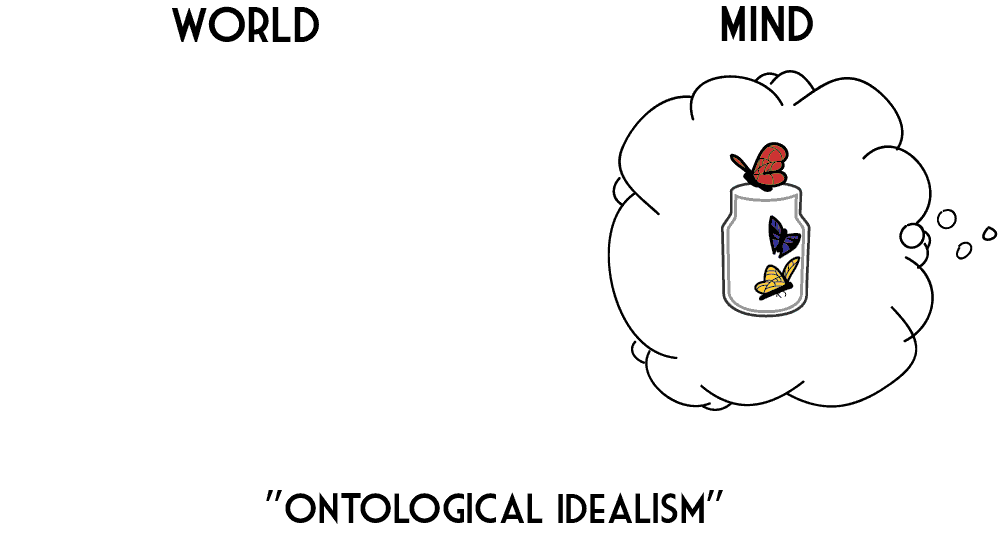
Ontological Idealism: The view that "something mental (the mind, spirit, reason, will) is the ultimate foundation of all reality, or even exhaustive of reality" (Guyer and Horstmann, SEP)
The word idealism refers to ideas or the mental, while ontological refers to matters of being and existence. The Irish philosopher Bishop Berkeley authored several classic expressions of ontological idealism between 1709 and 1713. By the end of the century, the German philosopher Immanuel Kant found it to be an absolute scandal that nobody had yet conclusively refuted the view.
"It still remains a scandal to philosophy... that the existence of things outside of us... must be accepted merely on faith, and that, if anyone thinks good to doubt their existence, we are unable to counter his doubts by any satisfactory proof." (Kant, Critique of Pure Reason, as quoted in Moore 1939)
Notably, Kant thought that the lack of a convincing refutation was not just a scandal, but a scandal to philosophy. We all behave as if the external world exists. But it is a philosopher's job to provide an argument. What's scandalous is that nobody had managed to do so.
Kant's 'Refutation'
Kant gave his own attempt to refute ontological idealism, which may be summarised as follows.
Kant's 'Refutation of Idealism' (Kant 1787, excerpt)
- I am perceiving my own existence.
- If I am perceiving something, then I am perceiving something in time.
- If I am perceiving something in time, then I am comparing my perception to something outside me.
- If I am comparing my perception to something outside me, then something outside me exists.
- Therefore, something outside me exists.
Notice that this is indeed a valid argument. Kant begins where Descartes left off at the end of the second Meditation, accepting that he exists and is a thinking, perceiving thing. He then claims that this requires comparison to something outside of me, in particular to explain how it is that our perception persists in time.
However, the argument is not exactly indestructible. At least the second premise is suspect: where does this concept of 'time' come from, in an argument where we don't even get to presume that an external world exists? The third premise can also be challenged: why does the comparison require something outside me? Why can't it be just be a comparison to another perception?
Epistemological idealism
Even if the refutation of ontological idealism above works, it doesn't establish very much. We're now dealing with a picture of the world that looks something like this: we have the content of our minds, and an external world exists, but we know almost nothing about that external world.
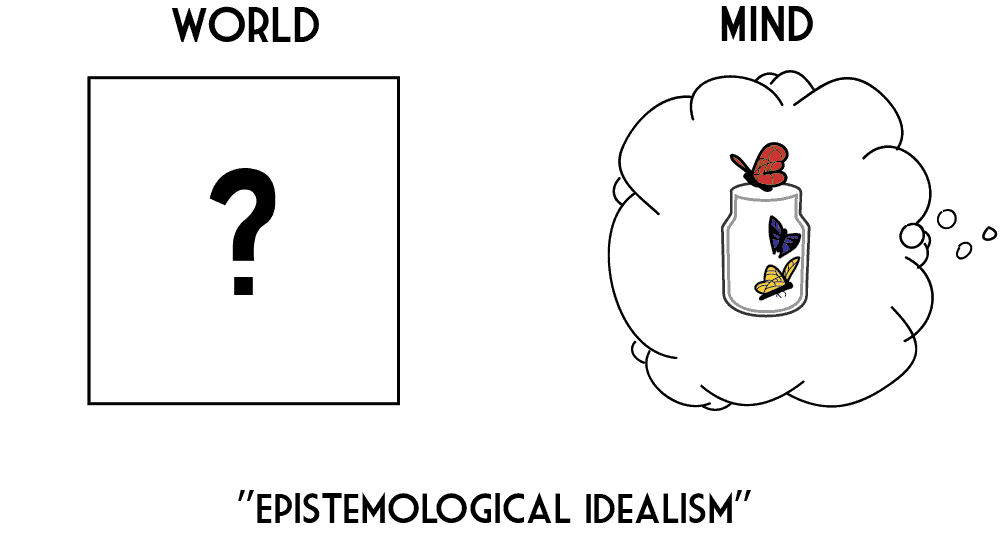
Epistemological Idealism: The view that, although a mind-independent world might be known to exist, all other knowledge is about the mental (the mind, spirit, reason, will).
Indeed, Kant concludes that an external world exists, but doesn't allow us any way to know anything about it, settling for a form of epistemological idealism instead. Epistemological idealism begins with a familiar idea, that everything you know is filtered through your own personal perspective. It then takes this idea to an extreme, claiming that although the external world exists, we cannot know anything about it. All of your knowledge about what the world is like is ultimately knowledge about yourself and your perspective.
Thus, although Kant can say that the external world exists, he cannot say "tables exist", at least not without a huge amount of qualification that makes all the familiar table-like qualities into mental properties. If we want to feel secure about our common-sense statement of existence of things like tables and chairs, then we are going to need another argument. This is what G.E. Moore set out to provide.
Doing Some Philosophy
We're going to discuss one of the most influential answers to Kant, developed by G.E. Moore in the first half of the 20th century. A classic statement of Moore's position is his famous Proof of the Existence of the External World. Of course, you might not agree with Moore's argument — and as a good philosopher, I expect you to be sceptical — but Moore is a master of the art of writing philosophy, and you should learn from the structure of his article while you read.

G.E. Moore
In particular, Moore engages in three main activities in this article. These are three things you should have in your toolbox as well, whenever you approach a question in philosophy.
Three Activities of a Philosopher
- Clarify the question. What exactly is meant by the words being used here? In this case, what are 'things in the external world'? Try to define the words at stake, distinguishing multiple possible meanings if needed.
- Give an argument. Produce an interesting, valid argument that establishes an answer to your philosophical question.
- Say why your answer is a good one. What would be a satisfying answer to this philosophical question? What would be an unsatisfying answer? Explain what makes your answer (and in particular your argument) a good one.
Let's see how Moore engages in each of these activities.
Moore's 'Proof of an External World'
Like the three activities of a good philosopher, Moore's article has three parts: he clarifies the question, gives an argument for his answer, and finally explains why he takes this to be a good answer. Let's discuss each part.
What are 'things in the external world'?
When Descartes, Kant or Moore try to prove that there are 'things in the external world', what do they mean by this? It might seem obvious at first, but it's actually not completely clear. Does Sherlock Holmes count as a thing in the external world? He is a fictional thing, but clearly more than a figment of my imagination. What about my best friend's feeling of happiness? Since it's a feeling, it seems to be an internal experience, although it seems 'external' to me.
Moore proposes to interpret 'things in the external world', of the type that he wishes to prove exist, by adopting Kant's phrase, things to be met with in space. He doesn't define 'things' or 'to meet with' or 'space', but gives some examples to illustrate: tables and trees both count. So do shadows, although shadows are only a 'thing' in a rather loose sense.



Examples of 'things to be met with in space' for Moore: tables, trees, and shadows.
In contrast, Moore argues that mental phenomena don't count as things in the external world. So, for example, seeing double or the experience of pain does not count as a 'thing to be met with in space'. Neither does the experience of smell, memory, perception, or imagination. So, these are not the sorts of things Moore will be referring to in his argument. He will always be referring to things that 'exceed perception'.
Of course, as an epistemological idealist, Kant sees the external and the mental as intimately connected, in a way that might suggest Moore's category is not so 'external' after all. Kant argues for both of the following claims:
- (a) a mental perception requires an external thing (as in his 'Refutation of Idealism' above); and
- (b) an external thing only exists if there is a mental perception of it.
Moore denies both these claims, arguing on the contrary that (a) a mental perception does not always correspond to anything in the external world, and (b) the external world does not require mental perceptions. Here is how he comes to these conclusions.
As evidence of the first claim, that mental perceptions don't always correspond to anything external, Moore gives the example of after-images. These are unusual experiences that occur following a physical adjustment in the human brain, usually in response to some over-stimulus of our colour or motion-detecting faculties.
For example, clicking the image below will flip between a grayscale image, and an image that will 'overload' your photoreceptors. Stare at the eye in the centre of the second image for 30 seconds, then click back to the grayscale image. This will reveal a surprising perception — but one not arising out of anything 'to be met with in space'!

The Dunstanburgh Castle illusion: Click, stare at the eye for 30 seconds, then click again
Another striking example is the after-effect of motion. Watch the video below for 30 seconds. Then turn and look at an object near you, and you will experience another perception that does not correspond to anything that exists in the external world.
The experiences you have with these illusions are certainly perceptions, but they do not correspond to anything in the external world. Why is that? Moore says that it's because 'things to be met with in space' should be perceivable in principle by anyone, whether or not they have done the priming experiments that you have just done. Since this is not the case with afterimages, such perceptions do not correspond to anything in the external world.
Moore similarly insists that by 'things in the external world', he means things that do not require perception in order to exist. In particular, he takes things in the external world to only require the possibility of meeting in space; no such meeting has to actually happen. Thus, no actual perception or any other interaction is required for 'things in the external world' to exist.
The distinction that Moore is drawing here is another one that originates in Kant, which is widely used in philosophical discussions.
Phenomena: appearances of objects from the perspective of a perceiving being.
Noumena: objects in and of themselves, which exist external to our perception.
Thus, whereas Kant proposed that all knowledge is about phenomena, Moore proposes to argue for knowledge of noumena directly as well. And with this clarification in hand, he is ready to give his famous argument.
The Argument: 'Here is one hand'

Oswaldo Guayasamín (1983), "El Grito II"
"I can prove now, for instance, that two human hands exist. How? By holding up my two hands, and saying, as I make a certain gesture with the right hand, 'Here is one hand,' and adding, as I make a certain gesture with the left, 'and here is another.' And if, by doing this, I have proved ipso facto the existence of external things, you will all see that I can also do it now in a number of other ways" (Moore 1939, pg.144)
Moore's argument is often referred to as the 'Here is one hand' argument. It can be summarised as follows.
Moore's (1939) 'Here is one hand' Argument
- Here is one hand (holding one hand up), and here is another (holding the other up).
- If here is one hand, and here is another, then two human hands can be met with in space.
- If two human hands can be met with in space, then things in the external world exist.
- Therefore, things in the external world exist.
You can imagine how other proofs of this kind would go: 'Here is one foot', 'Here is one chair', and so on. Moore also says the same argument can be applied to show that things in the external world once existed in the past. So, it is not so much the hand that is relevant, or the time that the hands are shown, but Moore's assumption that a hand at a moment can figure into an argument.
In a sense, this is a common everyday argument to make. For example, suppose I am trying to establish that a magician has a hidden card up his sleeve. A natural way to show this would be to hold the magician's arm up with the sleeve pulled down and reveal it to you. Moore's argument is essentially drawing on this everyday notion of a proof. The question is whether it is a sufficiently good argument to prove that things in the external world exists.
Is it a good argument?
Moore is aware that some might not be convinced that he has given a good, rigorous argument. He responds by asking what a good, rigorous argument is in the first place, and then shows that his argument is an example. The conditions Moore gives are the following.
Moore's Adequacy Conditions for a Good Argument
- Non-Circular. Each premise must be different from the conclusion.
- Known premises. The premises have to be true, and known to be true.
- Validity. The argument has to be valid, in that the truth of the conclusion follows from the truth of the premises.
It's easy to confirm that Moore's argument satisfies 1 and 3, so let's begin with those.
1. Non-Circular. A typical circular argument has the form,
- (Premise): A
- (Premise): B
- (Premise): C
- (Conclusion): A
This is actually a valid argument, by our official definition: if the premises are true, then the conclusion is true as well. However, it is not a very good argument. An argument that assumes its conclusion as one of the premises is called a circular argument, and should be avoided. Fortunately, Moore's argument is clearly not circular in that sense. So, his 'proof' passes his first adequacy condition with flying colours.
3. Validity. Moore's argument is valid: if the premises are true, then the conclusion must be true as well. It has in particular the following valid argument form.
Structure of Moore's Argument
- A
- A implies B
- B implies C
- C
To see that this is the structure of Moore's argument, just substitute A = "Here is one hand, and here is another", B = "Two human hands exist at this moment", and C = "Things in the external world exist".
2. Known premises. Does Moore really know the premises of his argument? The first two premises, where Moore claims to establish the existence of two hands, are perhaps the most controversial.

Premise: 'Here is a hand'
"I knew that there was one hand in the place indicated by combining a certain gesture with my first utterance of 'here' and that there was another in the different place indicated by combining a certain gesture with my second utterance of 'here'. How absurd it would be to suggest that I did not know it, but only believed it, and that perhaps it was not the case!" (Moore 1939, pg.145)
Moore is aware that many may find this statement unconvincing, in spite of the outrage expressed above, and demand further argument for the 'hands' premises. To such critics, he responds:
"Of course, what they really want is not merely a proof of these two propositions, but something like a general statement as to how any propositions of this sort may be proved. This, of course, I haven't given; and I do not believe it can be given.... [but] I can know things which I cannot prove; and amount things which I certainly did know, even if (as I think) I could not prove them, were the premisses of my two proofs." (Moore 1939, pg.147-148)
While Kant suggests that the unproved must only be accepted as a matter of faith, Moore asserts on the contrary that one can know things even without proof — for example by raising two hands — and in particular that two hands exist in the external world at this moment.
What About Dreams? The Moorean Shift

But what about the possibility that I am dreaming? The sceptical 'dream argument' formulated by Descartes seems to provide an argument that Moore does not know that two hands exist in the external world. The argument can be put as follows.
A version of the 'dream argument'
- If Moore might be dreaming, then Moore doesn't know that 'Here is one hand, and here is another'.
- Moore might be dreaming.
- Therefore, Moore doesn't know that 'Here is one hand, and here is another'.
In response to this concern, Moore writes the following.
"I should need to prove for one thing, as Descartes pointed out, that I am not now dreaming. But how can I prove that I am not? I have, no doubt, conclusive reasons for asserting that I am not now dreaming; I have conclusive evidence that I am awake: but that is a very different thing from being able to prove it." (Moore 1939, pg.148)
Moore's "conclusive reasons" have come to be understood as a certain logical trick, which re-frames the dream argument above in the following way. Keep 1 the same, but rearrange 2 and 3 as follows.
Moorean response to the 'dream argument'
- If Moore might be dreaming, then Moore doesn't know that 'Here is one hand, and here is another'.
- Moore knows that 'Here is one hand, and here is another
- Therefore, Moore must not be dreaming.
This is a valid argument as well. Thus, whether the Dream Argument or Moore's Response is correct just comes down to which second premise is more reasonable to assume. The sceptic accuses Moore of not knowing the second premise in his argument. But Moore accuses the sceptic of the same! It thus appears that sceptics cannot complain about the second premise of Moore's argument without undermining their own argument too. Or, to put it another way: the sceptic has not proven the second premise of the Dream Argument, and so sceptical conclusions like 'I don't know I have hands' are not as convincing as Descartes suggests. Moore goes on to offer a replacement argument in the form of his response; but even without this, Moore has provided an important challenge to the sceptical argument.
Moore's response here uses the fact that a valid argument in modus ponens form can always be reformulated as an (equally valid) argument in modus tollens.
Dream Argument Structure
- A implies B
- A
- B
This valid argument form called 'modus ponens'
Moore's Response Structure
- A implies B
- Not B
- Not A
This valid argument form called 'modus tollens'
Re-framing a debate from one of these forms to the other has become a well-known argumentative strategy in philosophy, now known as a Moorean shift in honour of G.E. Moore.
The Empiricist Response
We observed earlier that one of the important jobs of the philosopher is to clarify the meaning of terms. Sometimes, this is a matter of explaining what something means with greater precision, as Moore tried to do with 'things in the external world'.
Other times, the philosopher may well find that a sentence or a term has no meaning at all. For example, Noam Chomsky formulated the following as an example of a meaningless sentence, in his seminal 1957 work Syntactic Structures:
Colourless green ideas sleep furiously.
This sentence is grammatically correct. Many even report feeling like they understand what it's trying to express. However, there is a worry that to be 'colourless and green' or a 'furiously sleeping idea' are both completely meaningless. Our initial interpretation of the sentence as meaningful only only seem meaningful due to its the syntactic form. In reality, the sentence seems to be gibberish, analogous to uttering a sound like, "Ooga booga".
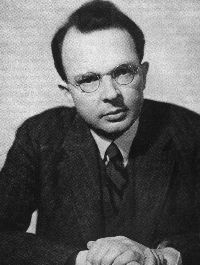
Rudolf Carnap, in a passage (see pg.333) from his (1928) Logical Structure of the World, argues that the external world debate is similarly meaningless, writing:
"neither the thesis of realism that the external world is real, nor that of idealism in the external world is not real can be considered as scientifically meaningful. This does not mean that the two theses are false; rather, they have no meaning at all so that the questions of their truth and falsity cannot even be posed." (Carnap 1928, pg.334)
Carnap reaches this conclusion on the basis of a simple criterion of meaning, that if a sentence is not just a truth of logic, then it is only meaningful if it can be verified via some empirical experiment. If there is no experiment that allows us to test and confirm the truth of the idealist's claim, or Moore's claim, then it is as meaningless as the utterance, "Ooga booga". This criterion, sometimes called the 'verifiability criterion', was part of an important school of thought that developed in the 20th century known as logical positivism or logical empiricism. This, in turn, is a particular form of a philosophical position called 'empiricism', which is particular important in the philosophy of science:
Empiricism: The view that "sense experience is the ultimate source of all our concepts and knowledge" (Markie, SEP)
Read More About Logical Empiricism
Does Moore's conclusion fall prey to this argument, as Carnap suggests? Perhaps it does not, insofar as Moore's illustration 'Here is one hand' counts as verification of the proposition that the external world exists. Whether or not this is the case, I leave to you.

